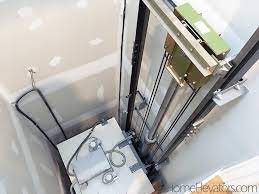hydraulic lifts
A hydraulic lift, also known as a hydraulic elevator, is a type of vertical transportation system that uses hydraulic power to move a platform or car between different levels of a building. Here is an overview of the basic components and functioning of a hydraulic lift:
Functioning of a Hydraulic Lift:
Car Descending: When the lift car is at the desired level, the control system receives a signal to move the car to a lower level. The control system activates the electric motor, which starts the hydraulic pump.
Fluid Pressure Build-up: The pump forces hydraulic fluid into the cylinder, increasing the pressure. This causes the piston to move upward, lifting the car.
Car Ascending: As the car ascends, the control system monitors its position and stops the pump once the desired level is reached. The fluid pressure is then released, allowing the car to remain at the desired level.
Safety Features: Hydraulic lifts incorporate various safety features, such as emergency stop buttons, door interlocks, and overload protection. These features ensure the safety of passengers and prevent accidents.


Maintenance and Service:
Hydraulic lifts require regular maintenance to ensure their safe and efficient operation. This typically includes checking and maintaining the hydraulic fluid level, inspecting and lubricating mechanical components, testing safety features, and conducting periodic inspections as per regulatory requirements.
It’s worth noting that the installation, maintenance, and repair of hydraulic lifts should be carried out by qualified professionals with expertise in elevator systems to ensure compliance with safety standards and regulations.
